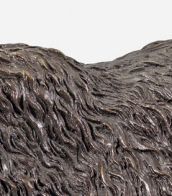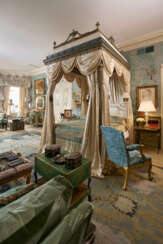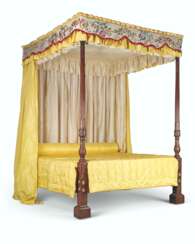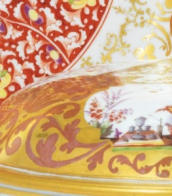bedö

Bedřich Smetana, baptized Friedrich, was a prominent Czech composer, pianist and conductor, and the founder of the Czech national school of composition.
Smetana studied music under his father, who was an amateur violinist, and also began piano lessons early and performed as early as the age of six. He later became a music teacher and opened a piano school in Prague in 1848. Smetana was a recognized piano virtuoso.
In 1856 Smetana wrote his first symphonies and in the same year was appointed conductor of the philharmonic of Gothenburg (Sweden), where he remained until 1861, and then, returning to his homeland, he became one of the founders of the national opera theater. Smetana's first opera, The Brandenburgers in Bohemia, was staged in Prague in 1866, and in the same year the public saw his second opera, The Sold Bride, and he gained a reputation as the national Czech composer.
By the end of 1874 Smetana had gone completely deaf, but for several years he continued to create: he wrote a cycle of six symphonic works, concertos, many piano pieces and other works. Smetana's works, in particular The Sold Bride, My Country and the Piano Trio, are still performed all over the world.
Bedřich Smetana is rightly considered the founder of the national school of composition: he was the first composer to use Czech folk themes and motifs in his works, and the opera Brandenburgers in Bohemia was written entirely in Czech for the first time. Smetana's work had an enormous influence on Czech composers of subsequent generations - Antonín Dvořák and Zdeněk Fibich - and the symphonic poem Vltava from the cycle My Homeland became the unofficial Czech national anthem.


The Master of Bedford was a French miniaturist and manuscript illustrator.
This master of the chapbook worked in Paris from 1405-1435 and is considered one of the most important 15th-century illuminators. He ran an influential workshop in Paris. The artist received his name after his work on two books, which he decorated with illustrations for John Lancaster, Duke of Bedford. One of these, The Bedford Hours, is considered one of the most outstanding illuminated manuscripts extant from the medieval period, with numerous illustrations and extensive decoration, including more than 1,200 decorative medallions that appear in the margins of each page.


The Master of Bedford was a French miniaturist and manuscript illustrator.
This master of the chapbook worked in Paris from 1405-1435 and is considered one of the most important 15th-century illuminators. He ran an influential workshop in Paris. The artist received his name after his work on two books, which he decorated with illustrations for John Lancaster, Duke of Bedford. One of these, The Bedford Hours, is considered one of the most outstanding illuminated manuscripts extant from the medieval period, with numerous illustrations and extensive decoration, including more than 1,200 decorative medallions that appear in the margins of each page.




Clara Augusta Amalie Emma Lobedan is a German painter and ceramist.
She studied painting in Berlin and became known for her exquisite still life and ceramic works. Lobedan painted in oils, watercolors, and pastels, and regularly participated in various exhibitions around the world.
Lobedan also directed the Women's Painting School and the Studio for Artistic Domestic Ceramics in Berlin.


The Master of Bedford was a French miniaturist and manuscript illustrator.
This master of the chapbook worked in Paris from 1405-1435 and is considered one of the most important 15th-century illuminators. He ran an influential workshop in Paris. The artist received his name after his work on two books, which he decorated with illustrations for John Lancaster, Duke of Bedford. One of these, The Bedford Hours, is considered one of the most outstanding illuminated manuscripts extant from the medieval period, with numerous illustrations and extensive decoration, including more than 1,200 decorative medallions that appear in the margins of each page.




Vincent Batbedat was a French sculptor and engraver.


Thomas Chippendale was a cabinet-maker in London, designing furniture in the mid-Georgian, English Rococo, and Neoclassical styles. In 1754 he published a book of his designs in a trade catalogue titled The Gentleman and Cabinet Maker's Director — the most important collection of furniture designs published in England to that point which created a mass market for furniture—upon which success he became renowned. According to the Victoria and Albert Museum, «so influential were his designs, in Britain and throughout Europe and America, that "Chippendale" became a shorthand description for any furniture similar to his Director designs».














































































